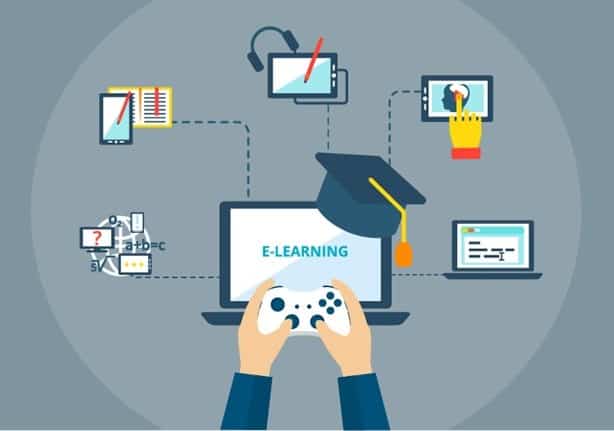Gamification has emerged as a revolutionary approach in various domains, extending its influence far beyond the traditional reward systems. This article delves into the multifaceted nature of gamification, examining its role in enhancing user success and engagement in diverse fields. We will explore how gamification transcends the conventional points and badges system, offering a more profound and impactful experience.
Understanding Gamification
Gamification is the application of game-design elements and principles in non-game contexts. It’s about harnessing the motivational aspects of games and implementing them in real-world scenarios. This approach taps into the basic human desires for achievement, recognition, and competition, translating them into various aspects of daily life, from education to business.
Historical Development
The roots of gamification trace back to loyalty programs of the early 20th century. However, it gained significant momentum in the digital age, with technology providing new platforms for its implementation. Its evolution reflects a shift from simple reward systems to more intricate designs that engage users on multiple levels.
The Psychology Behind Gamification
Gamification works by leveraging psychological principles such as reward-based learning and positive reinforcement. By providing instant feedback and rewards, it encourages users to engage in desired behaviors, fostering a sense of accomplishment and progress.
Emotional Engagement
Emotional engagement is crucial in gamification. By creating immersive experiences, gamification taps into emotions like joy, curiosity, and even frustration, driving users to overcome challenges and achieve their goals.
Gamification in Business
In the business sector, gamification is used to boost employee engagement and productivity. By gamifying tasks, companies can make mundane activities more interesting, encouraging employees to perform better and fostering a positive work environment.
Customer Loyalty Programs
Customer loyalty programs are a classic example of gamification in business. By rewarding customers for purchases and engagement, businesses can enhance customer loyalty, driving repeat business and brand advocacy.
Gamification in Education
Gamification in education transforms learning into an interactive and enjoyable experience. By incorporating game elements into educational content, students are more engaged and motivated, leading to better learning outcomes.
Classroom Dynamics
Gamification also changes classroom dynamics, promoting collaboration and healthy competition among students. It encourages active participation and provides a platform for students to showcase their skills in a fun and supportive environment.
Gamification and Health
In the health sector, gamification is used to encourage healthy behaviors and lifestyle changes. Apps and programs that gamify exercise, diet, and medication adherence help individuals stay on track with their health goals.
Mental Health and Well-being
Gamification also plays a role in mental health, offering tools and apps that make managing stress, anxiety, and other mental health issues more approachable and less stigmatizing.
Technological Advancements in Gamification: The Role of AI and Machine Learning
AI and machine learning are revolutionizing gamification by personalizing experiences and making them more adaptive. These technologies can analyze user data to offer tailored challenges and rewards, enhancing the overall experience.
Virtual and Augmented Reality
Virtual and Augmented Reality technologies are taking gamification to new heights, offering immersive and interactive experiences that were previously impossible. They provide a new dimension to gamification, making it more engaging and realistic.
Challenges and Criticisms: Overemphasis on Rewards
One of the criticisms of gamification is its overemphasis on external rewards, which can diminish intrinsic motivation. There’s a fine line between encouraging engagement and fostering an unhealthy dependence on rewards.
Ethical Considerations
Ethical concerns also arise with gamification, particularly regarding user privacy and data usage. Ensuring that gamification strategies respect user rights and privacy is crucial for their sustainable and responsible implementation.
Case Studies of Successful Gamification: Beyond Surface-Level Rewards
Beyond the immediate concept of adding fun to mundane functions, it becomes evident that gamification is a multifaceted tool that can enhance the relationship between a business and its clients. There is a natural fit for regional platforms like BetMGM Ontario but gamification can benefit businesses in every sector.
Impact on User Engagement
These case studies demonstrate that when gamification is implemented thoughtfully, it significantly impacts user engagement and retention, proving its efficacy beyond just reward systems.
The Future of Gamification: Emerging Trends
The future of gamification is likely to see more personalized and immersive experiences, with advancements in technology paving the way for innovative applications in various fields.
Expanding Horizons
As gamification continues to evolve, it’s expected to expand into new domains, offering novel ways to engage users and achieve success in various endeavors, from personal development to societal challenges.
Conclusion
Gamification transcends the conventional notion of a mere reward system; it represents a dynamic intersection of psychology, technology, and human behavior, forming a multifaceted field that continuously evolves with societal and technological changes.
Its role extends far beyond the simplistic distribution of points and badges. Instead, gamification taps into the innate human desires for achievement, recognition, and a sense of progress, thereby creating more engaging, rewarding, and immersive experiences.
The true power of gamification lies in its ability to influence behaviors, shape experiences, and foster deep engagement. By leveraging psychological principles, it can motivate, educate, and even rehabilitate, offering transformative experiences in various sectors, from business and education to health and social change.







